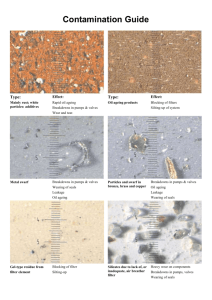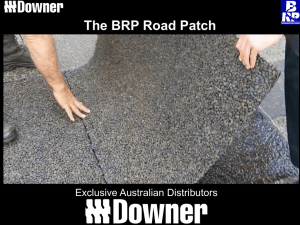Using the ez-gSEAL Pressure Controller for
advertisement
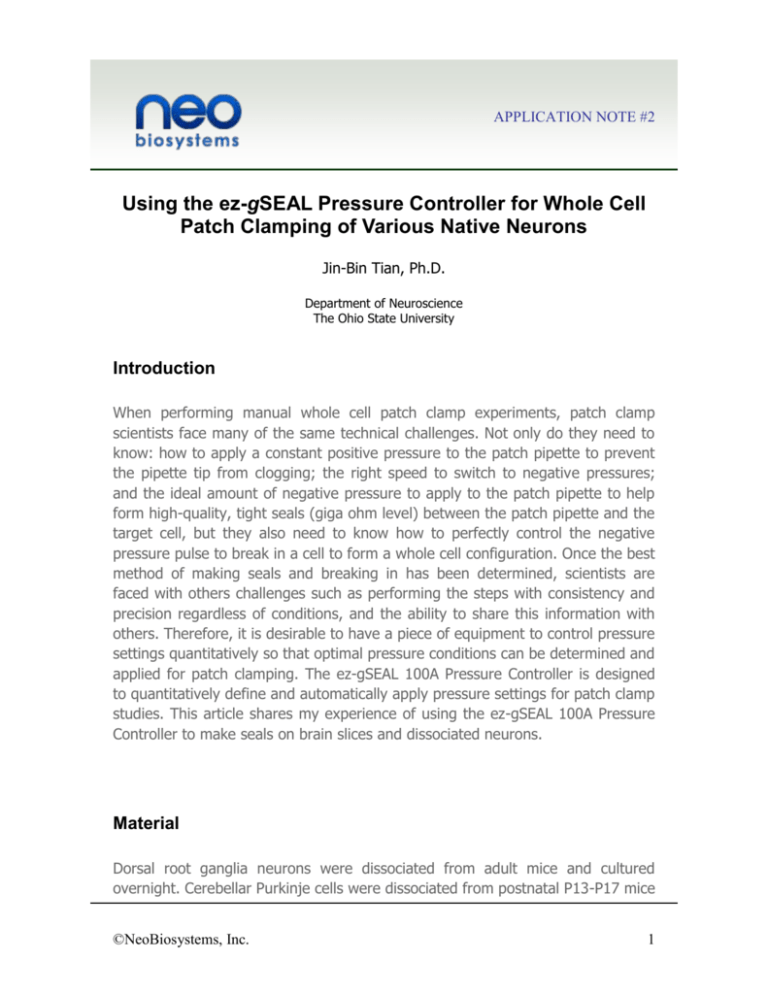
APPLICATION NOTE #2 Using the ez-gSEAL Pressure Controller for Whole Cell Patch Clamping of Various Native Neurons Jin-Bin Tian, Ph.D. Department of Neuroscience The Ohio State University Introduction When performing manual whole cell patch clamp experiments, patch clamp scientists face many of the same technical challenges. Not only do they need to know: how to apply a constant positive pressure to the patch pipette to prevent the pipette tip from clogging; the right speed to switch to negative pressures; and the ideal amount of negative pressure to apply to the patch pipette to help form high-quality, tight seals (giga ohm level) between the patch pipette and the target cell, but they also need to know how to perfectly control the negative pressure pulse to break in a cell to form a whole cell configuration. Once the best method of making seals and breaking in has been determined, scientists are faced with others challenges such as performing the steps with consistency and precision regardless of conditions, and the ability to share this information with others. Therefore, it is desirable to have a piece of equipment to control pressure settings quantitatively so that optimal pressure conditions can be determined and applied for patch clamping. The ez-gSEAL 100A Pressure Controller is designed to quantitatively define and automatically apply pressure settings for patch clamp studies. This article shares my experience of using the ez-gSEAL 100A Pressure Controller to make seals on brain slices and dissociated neurons. Material Dorsal root ganglia neurons were dissociated from adult mice and cultured overnight. Cerebellar Purkinje cells were dissociated from postnatal P13-P17 mice ©NeoBiosystems, Inc. 1 and used right after dissociation. Horizontal or sagittal brain slices (250-350 µm) were cut from brain tissue dissected from the adult mice. A HEKA EPC10 Patch Clamp Amplifier coupled with PatchMaster Recording Software was used for the whole cell patch clamp recording. Glass pipettes were made from capillaries (A-M System, INC. Catalog#: 61700) and pulled on the PC-10 micropipette puller from the Narishige Group, using the two-step pulling protocol. The final resistance of the recording pipette after the internal solution was filled was approximately 3-7 MOhm, depending on the composition of the internal solution. Seal Method and Results I tested this pressure controller on a number of specimens. It not only worked very well on cultured cells like HEK293 cells, but also on acutely dissociated DRG neurons, and even on cells from brain slices. However, I needed to work out different sets of parameters for each specimen. Once the right parameters are set, the rest of the work became very easy and consistent. It has definitely helped me improve the success rate of high quality patches and it is very easy to operate. I just need to click one or two buttons in the software that control the controller at each step during patching; the software and the machine take care of everything else automatically. In most cases, after a few clicks, the whole cell configuration is already well accomplished. The whole operation just takes a couple of seconds. Making Seals The NBSController Software, a free software that comes with the ez-gSEAL 100A Pressure Controller, provides three buttons for making seals. See figure above. ©NeoBiosystems, Inc. 2 The process of making seals is accomplished by clicking the buttons. P1 is commonly used to set the positive pressure to prevent the patch pipette from being clogged when the patch pipette approaches the cell membrane; P2 can be used to set the negative pressure for making seals; and P3 is used to set the holding pressure that keeps the seal stable. For brain slices, I usually use high positive pressures to prevent the electrode from clogging. For dissociate neurons, I found that if high positive pressure is used, the seal success rate becomes lower. The parameters I used for making seals for different samples are listed in Table 1. After applying P2 pressure, if I see pipette resistance increase quickly to more than 150 MOhm, I will click P3 and wait until the gigaseal forms. In most cases, as soon as the negative pressure is applied, a giga ohm seal can be reached within seconds. Usually the success rate of making seals can reach at least 90%. Table 1 Parameters for making seals and breaking in for different cell types. P1: the positive pressure applied when the patch pipette approaches the cell. P2: the negative pressure for making seals after the patch pipette touched the cell membrane. P3: holding pressure. Added: the parameter for minor adjustment during breaking in. Peak: the amplitude of the square pulse used for breaking in. Duration: duration of the pulse for breaking in. Specimen Making Seal Parameters Breaking in Parameters P1 P2 P3 Added Peak (mmHg) (mmHg) (mmHg) (mmHg) (mmHg) DRG neurons (dissociated and cultured) Cerebella Purkinje neurons (dissociated) Cerebella Purkinje neurons (brain slice) Cortical Pyramidal neurons (brain slice) Duration (ms) 10 -40 -0.1 5-10 -80 400 20 -50 -0.1 5-10 -80 400 100 -40 -0.1 5-10 -100 400 50 -50 -0.1 5-10 -100 400 Breaking-in Although the ez-gSEAL 100A Pressure Controller can apply a train of pulses with gradually increasing amplitudes for breaking in, I usually set the breaking in ©NeoBiosystems, Inc. 3 pressure manually as I feel it gives better control. Depending on the individual cell, the breaking in pressure can be slightly different. Table 1 shows the average pressure for breaking into different types of cells. When I break into a cell, I usually start with a pressure slightly below average. For instance, for brain slices, I usually start at -90 mmHg. When I click the button to apply the suction pressure, I monitor the seal pulse for capacitance change. If I see the pulse shake with a hint of possible capacitance increase, I will apply the same pulse again. Typically, repeating the same pulse a couple of times will guarantee a good, clean break-in. If the seal pulses show no hint of break-in when applying the suction of pressure, I will increase the peak amplitude 5 or 10 mmHg, depending on the situation, and repeat the same procedure. It is not uncommon that a good whole cell configuration is formed a few seconds after the first pulse administration, and sometimes after the second or the third pulse of the same level has been applied. Following this procedure, my success rate of break-in is around 90%, and seals usually last during the entire experiment (up to an hour). The figure below shows some current clamp records from brain slices. B 100 pA A 2 spike 02 02 02 02 02 02 02 02 02 02 0.02 0.01 0.00 1 Sign al 02 A -0.0 1 -0.0 2 -0.0 3 -0.0 4 -0.0 5 -0.0 6 0 0.01 0.02 0.03 0.04 0.05 0.06 0.07 0.08 0.09 0.10 0.11 0.12 0.13 0.14 10 mV 10 ms 0.15 s 200 pA 20 mV 50 ms Figure 1 Whole-cell current clamp recordings of neurons in mouse brain slices. Whole-cell configuration was made with the help of the ez-gSEAL 100A Pressure Controller. A. Spontaneous firing of a cerebellar Purkinje cell. B. Induced firing of a lateral amygdala pyramidal neuron. ©NeoBiosystems, Inc. 4 Discussion After using the pressure controller for a few months, I was surprised by this instrument’s performance. It did a superb job of handling the technical challenges I mentioned at the beginning of this article. The advantage of using the pressure controller is that the user can quantitatively set all key parameters that determine the quality of the patch. Because of the quantification, it is possible to fine-tune the seal and break-in settings for each cell to reach optimal conditions. Also, because of the quantification, it can accomplish the accuracy and consistency that the hand operation cannot compare to. Due to its versatility, this pressure controller should offer great assistance to patch clampers at all skill levels. I feel that it is especially beneficial to students and researchers who are new in the electrophysiology field because, with the help of this instrument, they can handle the apparently complicated patch clamp technique easily and quickly. When I was learning the patch clamp technique, it took me a couple of months to practice all kinds of tricks using syringes and manual switches to patch cells. Now, with the help of this instrument, I saw my colleague who had no prior experience in electrophysiology, patch a dozen HEK cells in one day after just a few weeks of practice. www.neobiosystems.com info@neobiosystems.com ©NeoBiosystems, Inc. 1407 Heckman Way, San Jose, CA 95129 Phone 408-454-6026 Fax 408-865-1856 5
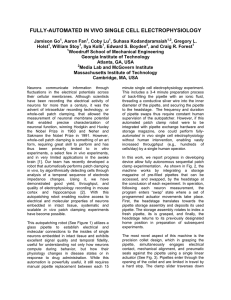
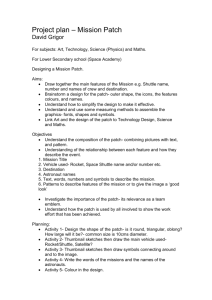

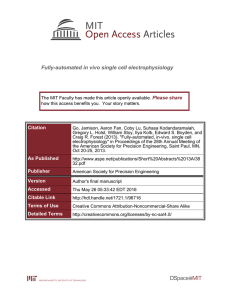


![Pumpkin Patch - L2 exam summary questions[1]](http://s3.studylib.net/store/data/006891404_1-eaba8a01ed43ce8c58f5173adc5f257b-300x300.png)
